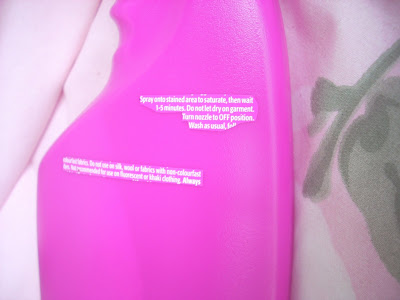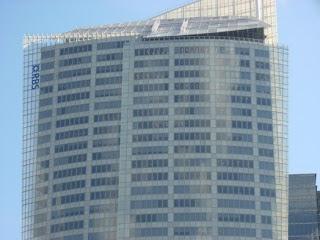This story gives me hope that Permaculture Designers are everywhere, unbeknownst to themselves. And a demonstration that Permaculture can fix maybe.... maybe...everything.
 Illustration by Cecilia Macaulay
Illustration by Cecilia MacaulayIts the story of
Adards, a Nursing home clever and loving enough to receive even the violent demented elderly. These might be ladies and men whom no other nursing home could accept or manage, people who were otherwise heavily sedated, or living all their last days frighted and distressed.
I've not visited yet, so what I write is based on old website information, and a remembered newspaper article read about six years ago.
It starts with Dr Sam Tooth, and Dr Sam Ginsberg, compassionate and imaginative professionals who saw that things could be different. They gathered allies and set out to create a home, and environment in which frustrations and escalations just couldn't take root. Bill Mollison would call it 'Using Aikido, rather than Karate', guiding the energy of the residents to flow and dissipate harmlessly, instead of using our energy to block and overpower, with distress and cost on all sides.
Adards' 37 bed Nursing home was finally opened in 1991, in Warrane, Tasmania.
Now for a tour, with images taken from Adards (difficult to find) website.
Now how wonderful is this?
 Right thing in the Right place
Right thing in the Right placeDoors that go to 'staff only' areas are camouflaged, with only a hole for the key. Patients who want to follow the nurse instead open and wander through the obvious, unlocked door, and back into a living area, and soon forget the original nurse-trailing mission they had set out on.

Here is the same trick with the residents wardrobe: the clothes in the 'real', camouflaged wardrobe can stay nicely folded, but there is an accessible wardrobe for residents to have a good old rummage through their stuff. Instead of futile folding work for the nurses, more time can be spent chatting. The level of staff contentment in this home is legendary, as something visitors can see, and something their long-service statistics show.
Designing for things to happily follow their nature
I remember hearing that this home its built on a hill. Because the residents don't see a wall keeping them in, they 'forget' to rail against it, the challenge to escape is not there. I also remember a story that there was a bus stop installed in the gardens, where an elderly lady would spend hours happily waiting, so she could go and pick up her daughter from school. Imagine being convinced your little girl needed you, and people you don't really know keep hauling you back, stopping you. The muddled thoughts won't go away, but the reality they collide with can me made softer, more human.
According to the website, there really is an old car in the garden, that the men like to polish and sit in, 'cause a man's gotta do what a man's gotta do.

Adards is actually 4 individual, domestic-style homes, each linked at a central hub, and edged with own garden. The gardens are there to be wandered in, and who would want to wander if there wasn't something to seek out? A dog and a kitty-cat, a BBQ, and the familiar site of a clothesline are comforting domesticities, with long verandas for wet-whether wandering.
The gardens are separated not by a forbidding fence, but by a shared aviary and chook shed. Not the end, but the start of something interesting.
The layout of the whole home is so clever, I wish I could show you here, but you will have to visit the
Adards Nursing Home Website for now.
 Use the power of rhythmAnticipate and plan for change
Use the power of rhythmAnticipate and plan for changeDuring the day, the central hub that connects the four wings, or houses, is closed. Residents are free to wander in their own garden, veranda and living areas.
Sundowning time is when life's losses and defeats are deeply felt, and the fractiousness this leads to is planned for. Activities to distract and divert get get the residents over the toughest time of day, then dinner can be enjoyed.
Night is when old thought bubble up, and the wandering begins. This is not forcibly stopped, but designed for. The central hub is opened, connecting the corridors of all four homes. Down they hurtle, making great progress along passageways unfamiliar during daylight hours, passageways circling them back to the safely of their own rooms. Back in there own beds, the energy that fueled their expedition all spent, they rest.

 Allowing every person, every creature to make their contributionandThe amount of meaningful connections is a measure of riches.
Allowing every person, every creature to make their contributionandThe amount of meaningful connections is a measure of riches.I remember being tiny, up on a stool washing the dishes, ecstatic. My mother had arranged an apron, an underwater tea towel to stop things breaking at the bottom, and here I was (3? 4?) making a contribution.
Its a built-in human need, to contribute. In this kitchen at Adards, the stove is lockable, and the hot water lever is removable, so residents don't get burnt while pottering, helping, and enjoying being immersed the comforting smells and routines of getting dinner.
 Wimpy excuses, or happy results
Wimpy excuses, or happy results.
The carpet and upholstery feel like cloth, but are waterproof. The 'Fireplace' creates a cozy glow to gather around, but all heat comes from ducts. Other places would justify their vinyl chairs and industrial feel by blaming the messy silly patients. In yet other places, coziness is exclusive to those with tip-top faculties. But there is very often a way to get a really good result with whatever flawed human beings you start with, if you look beyond the obvious, keep searching for alternatives. All of us are flawed, all of us could do with forgiveness and damage-control planned in.
We are not islands. Strategic changes to the 'ecosystem' we live in can significantly, effortlessly change us. What a relief. Thank-you Adards.
If you enjoyed this story, and got some ideas for your own life, own projects, I'd love you to share them in the Comments section. My next post will be an intimate exploring of the permaculture design principles as seen performing their small miracles at this special, life-giving place.
 My extra motivation this time?
My extra motivation this time?








































